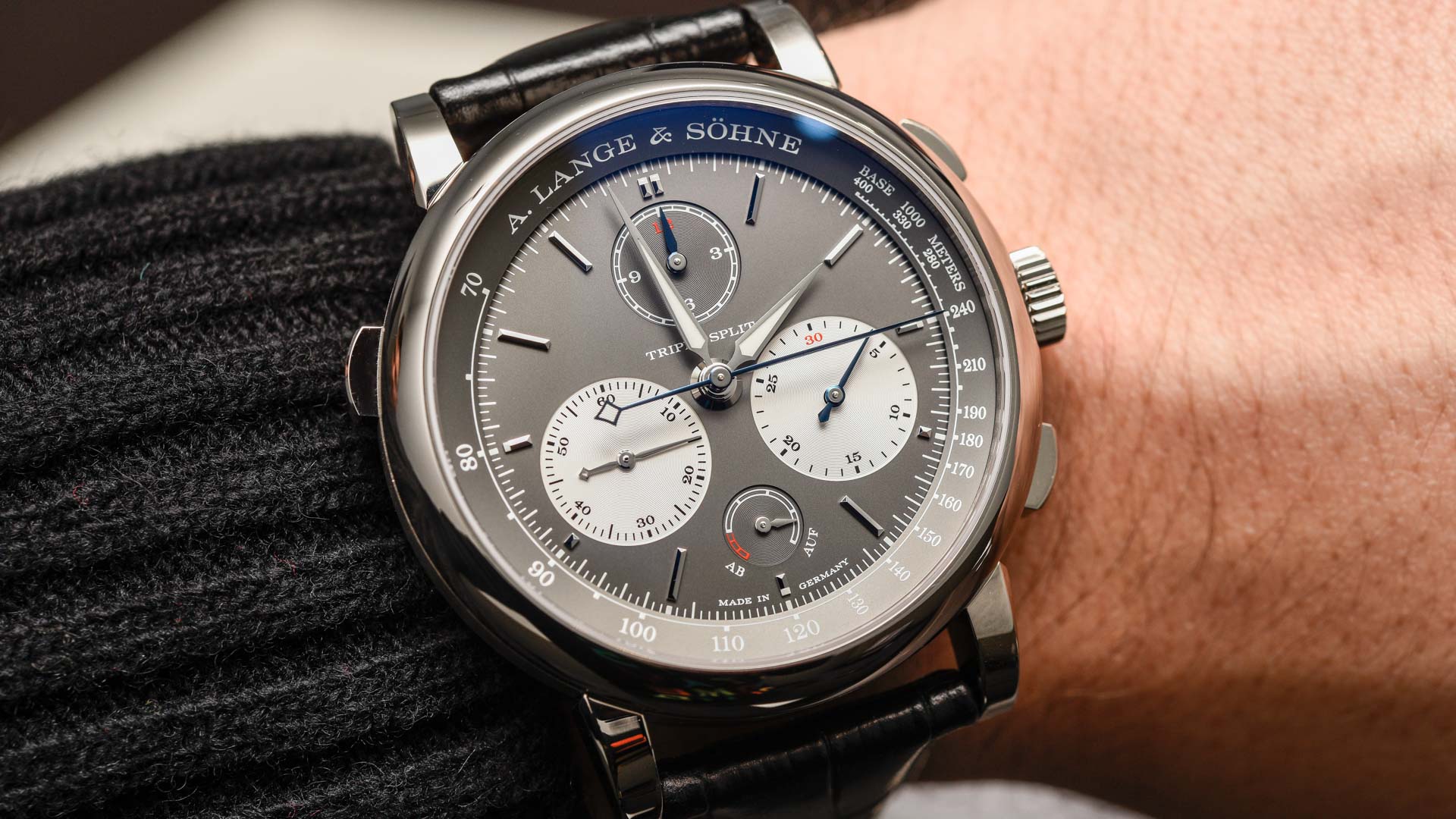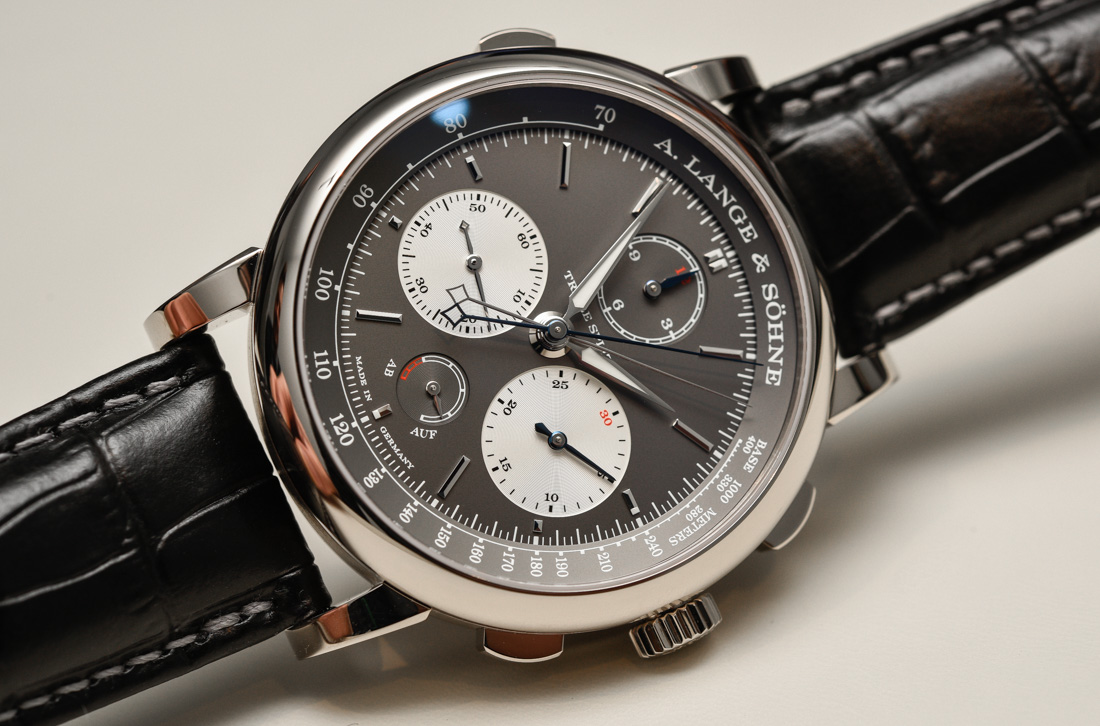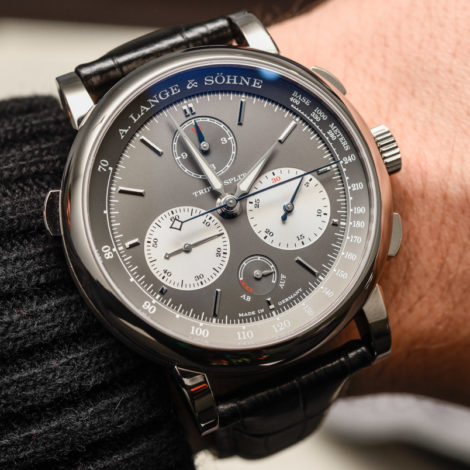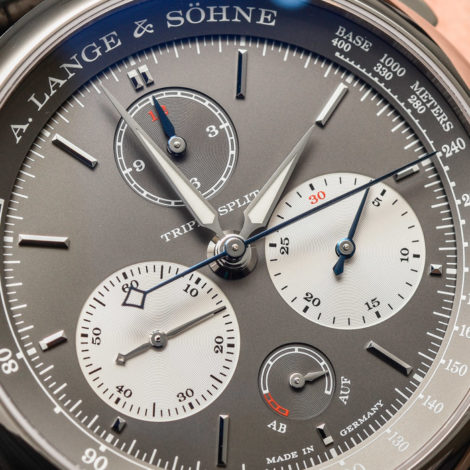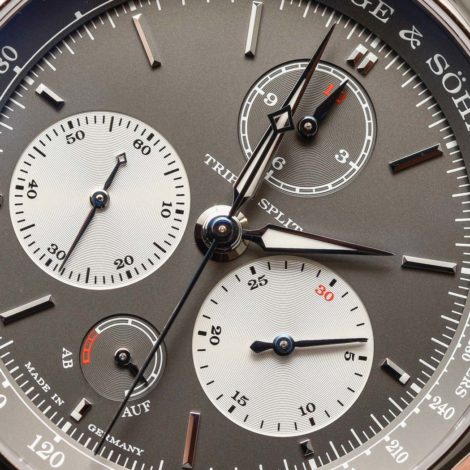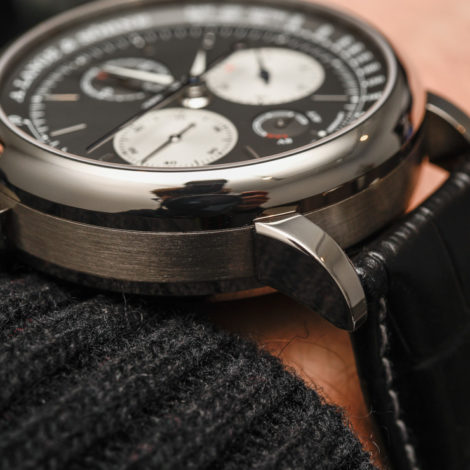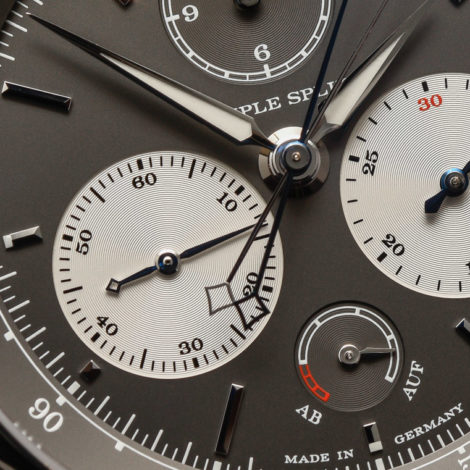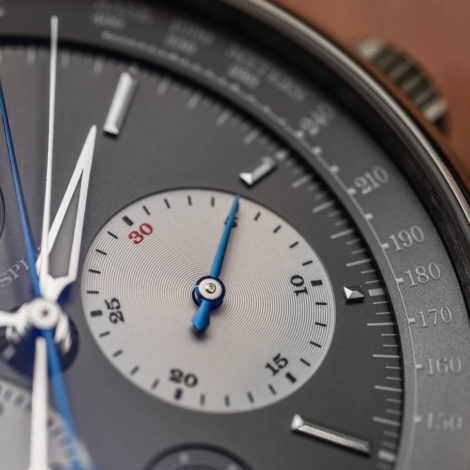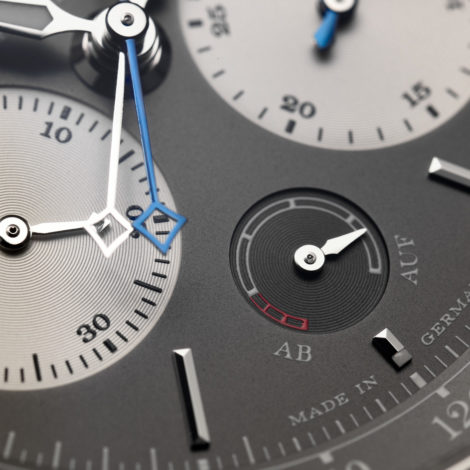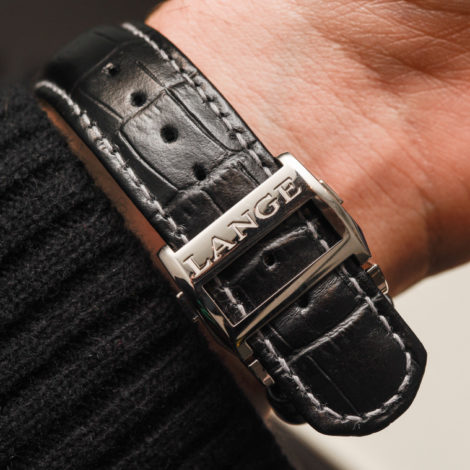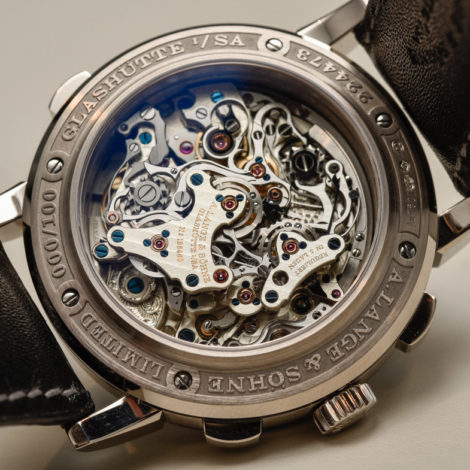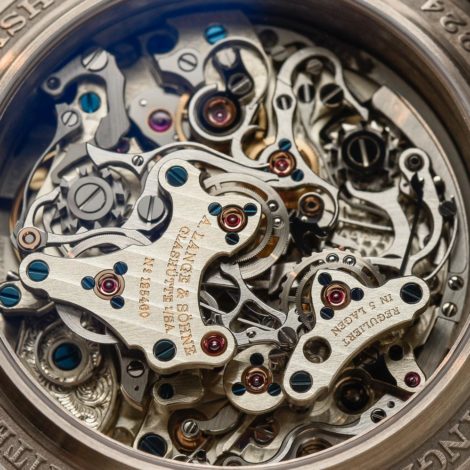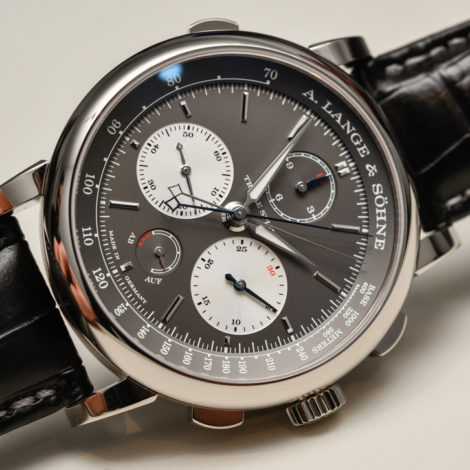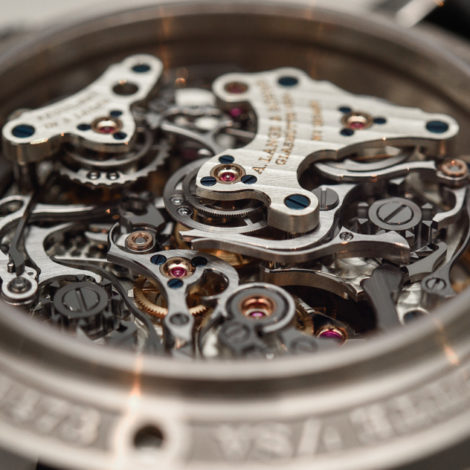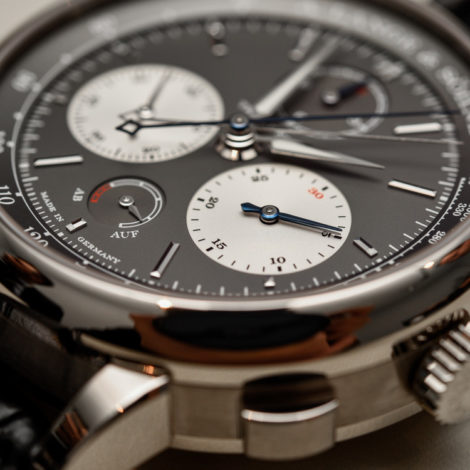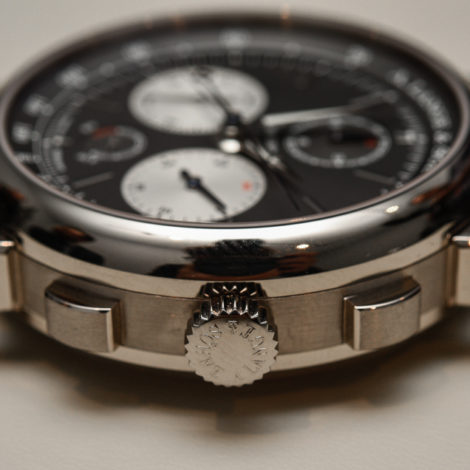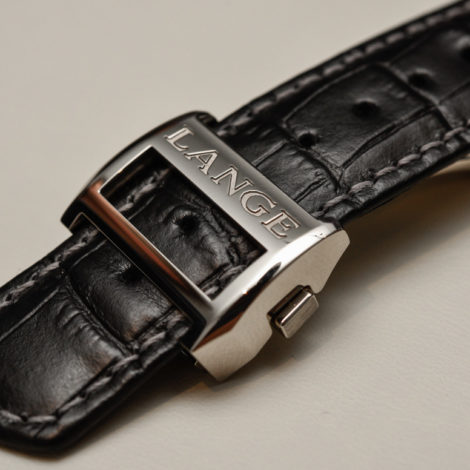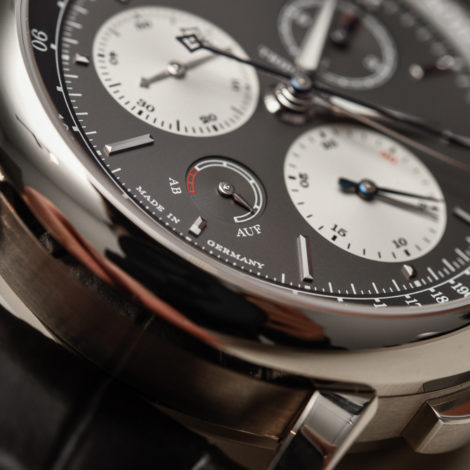
The people at A. Lange & Sohne get their kicks by doing things that others in the world of horology haven’t yet. To some who aren’t familiar with such competition between mechanical watchmakers, this pursuit of technical novelty at any cost might seem anywhere from quaint to queer. Does the world need a roughly $150,000 chronograph timepiece because it contains two sets of the popular complication? The proud faces of the watchmakers and product managers at the impressive and high-end German brand will quickly say “ach ja they do!” The watch I am referring to is the new for 2018 limited edition A. Lange & Sohne Triple Split (originally debuted on aBlogtoWatch here).

“Triple Split” as a name is a bit confusing because the watch is actually a double chronograph with two 12-hour chronograph mechanisms in one movement. The problem is that other watches have been called double chronograph before – mainly split-second chronographs that feature one full-functioned chronograph complication and a corollary one that measures up to 60 seconds. For generations the split-second chronograph has been one of the elite complications next to perpetual calendars and minute repeaters lauded by enthusiasts and prized by watchmakers themselves. The functionality of a split-second chronograph is deceptively simple given the complexity in assembling and producing them.
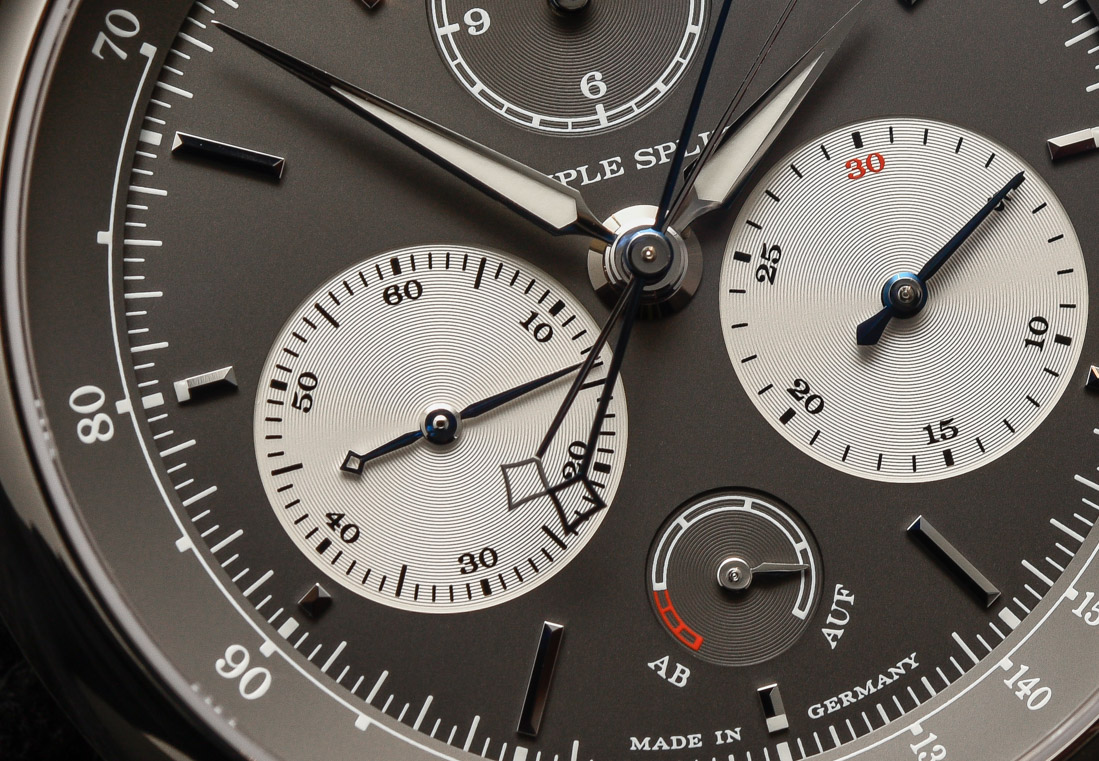
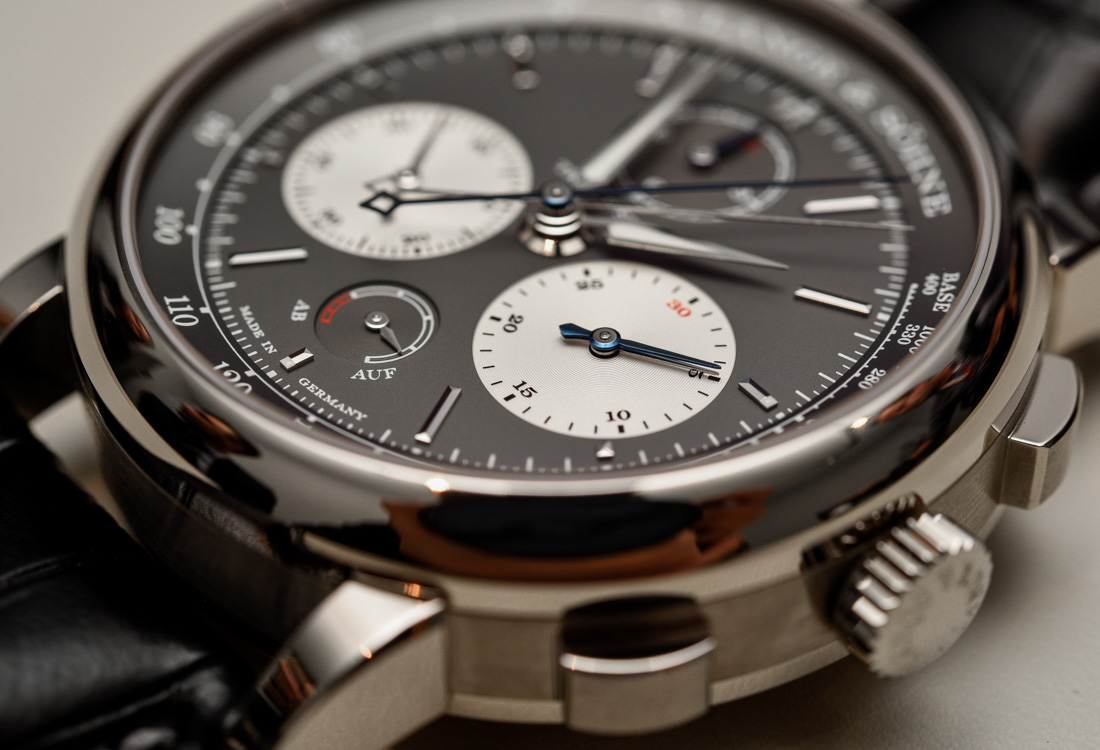
In around 2004 A. Lange & Sohne released the Double Split watch that the Triple Split builds upon. The watches share a lot of resemblance and the Triple Split more or less simply adds an additional sub-dial to the Double Split’s layout. When the Double Split came out the novelty in it was that the split-second chronograph was able to measure up to 30 minutes versus just 60 seconds. A. Lange & Sohne accomplished this by having a hidden secondary minute counter hand in the same way that split-second chronograph hands stack on top of one another. In most instances when using the chronograph just one of them is working and the secondary hands are hidden. So the Double Split simply had a split-second hand and a split-minute hand. Hence the Double Split part of the name. For 2018, A. Lange & Sohne ups the ante by adding an additional hour counter sub-dial that has a split hour hand. Thus, there are three “splitting” hands and hence the name “Triple Split” makes sense.
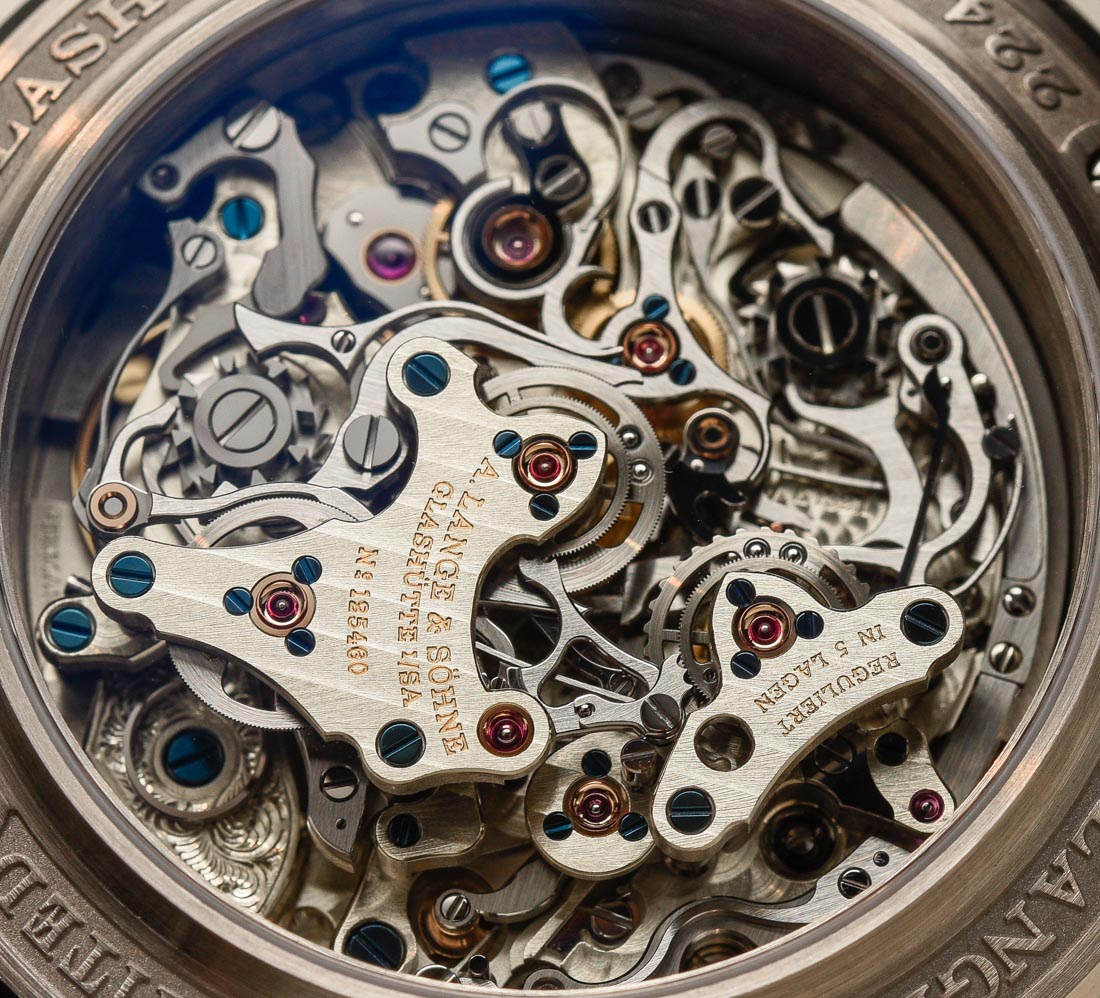
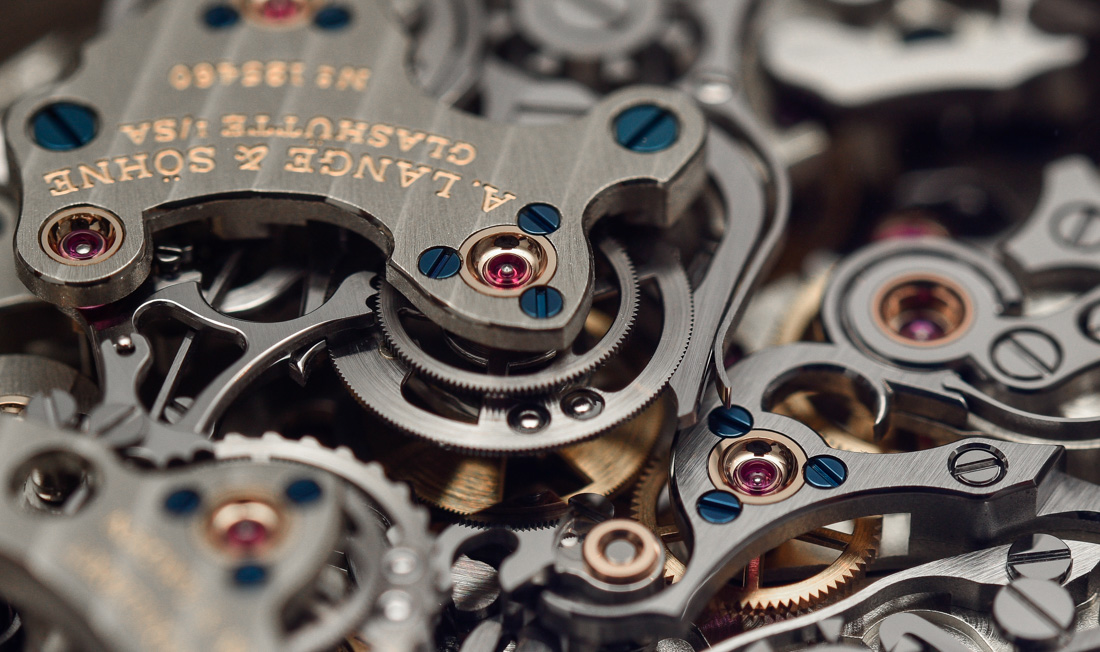
The movement inside of the A. Lange & Sohne Triple Split is the in-house made caliber L.132.1 and it is a beauty as viewed from the caseback. If there is one really good reason I can think of to get a chronograph from A. Lange & Sohne and to pay these prices, it is for the view. Lange’s chronograph movements are always so intricate and fascinating to look at. These are small, deep cities of hand-finishing and finely made metals. Being the most complicated chronograph A. Lange & Sohne current produces, the Triple Split’s movement presentation does not disappoint. The movement is produced from a massive number of parts (comparatively speaking); 567 components. Each of those is carefully hand-finished and prior to shipping the watch from the factory, A. Lange & Sohne builds, disassembles, checks, and rebuilds each of their watches. This process takes a lot longer with such a complex mechanism than say, a more simple time-only product.
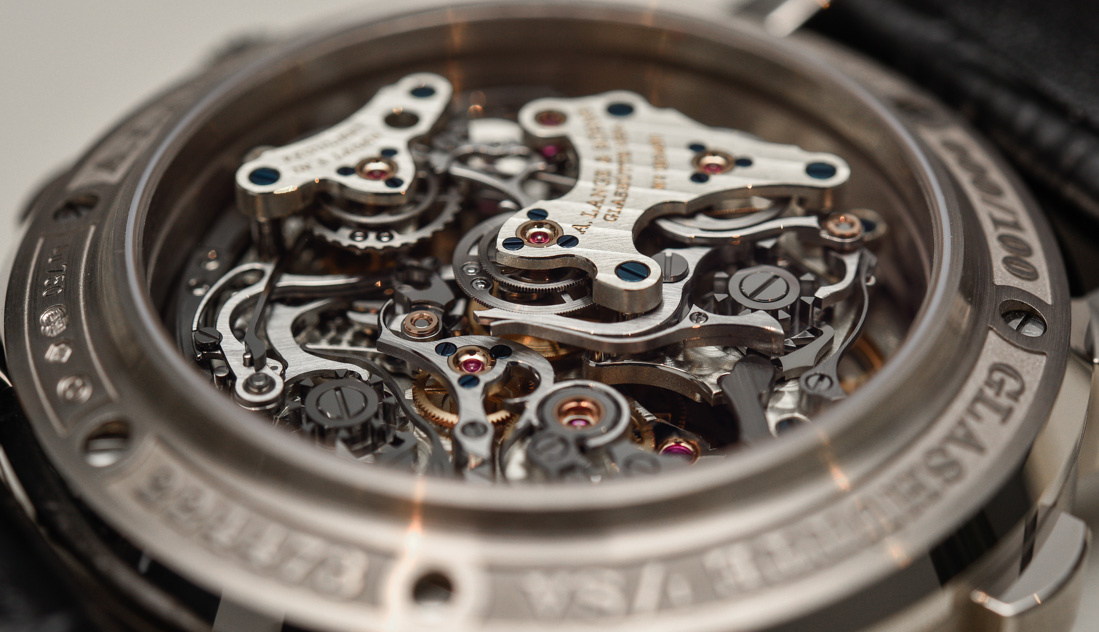
The manually-wound L.132.1 movement operates at 3Hz (21,600 bph) with a power reserve of 55 hours. What is interesting is that the Double Split watch has a power reserve of 38 hours even though it is produced from less parts (465, in the movement that is). So Lange must have included a larger mainspring barrel for the movement in the Triple Split. With that said, the Double Split and Triple Split’s movements are virtually identical in size, with each being 30.6mm wide. The Double Split with less parts is 9.5mm thick and yet somehow the Triple Split’s movement (with over 100 extra parts and a larger mainspring barrel) is actually 9.4mm thick. This is real engineering innovation and it’s unfortunate that only a few collectors will be able to enjoy it.

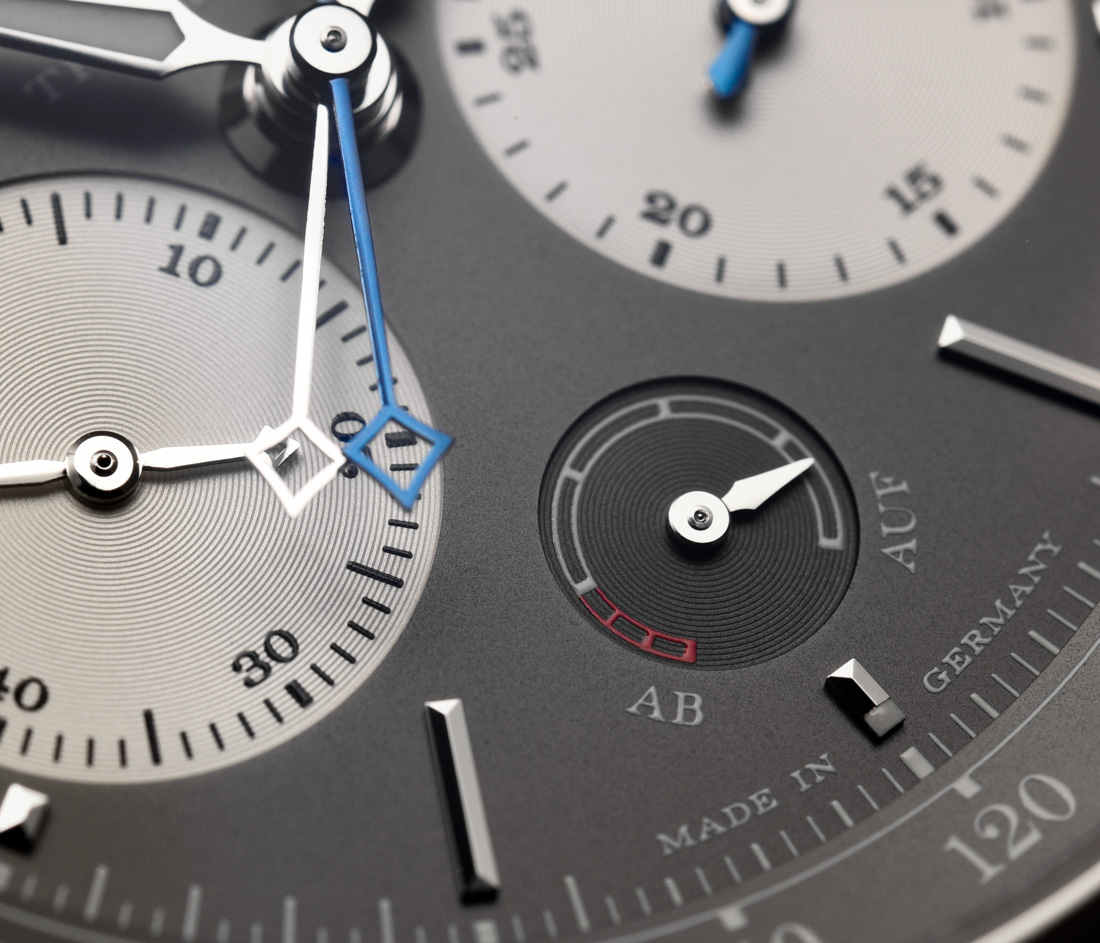
In addition to the time and chronograph system on the dial, the Triple Split (like the Double Split) has a power reserve indicator on the dial. There are a total of 10 hands on the dial as well. The main chronograph hands are in beautiful blued steel, while the hidden “split” hands underneath them are in a silver tone. As a sporty watch, the Triple Split also has lume-painted hour and minute hands. The debut version of the Triple Split comes with a matte anthracite-toned dial and with two of the sub-dials in white with a snailed pattern. Being true to traditional chronograph timepieces, it also has a tachymeter scale around the periphery of the dial.

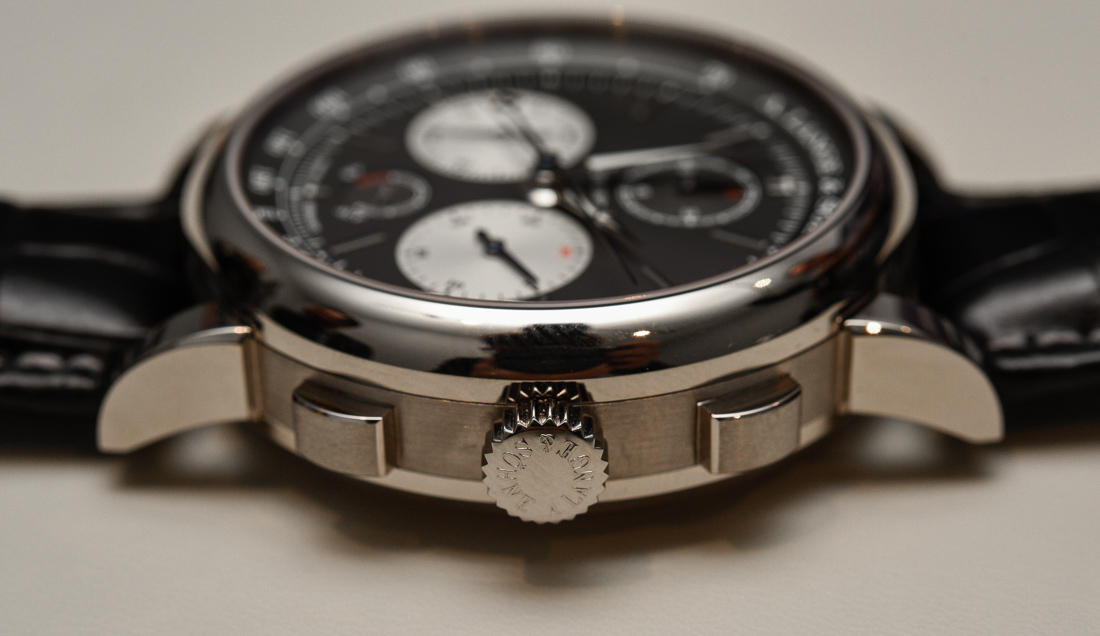
I’m not going to try and justify the reason for having two 12-hour chronographs in one timepiece from a utilitarian standpoint. Surely such a device would be celebrated more widely if it wasn’t for the universe of digital stopwatches. In a parallel universe where mechanical watches are still king, surely people in the worlds of sport racing and competition would be really excited about such a product. As it stands in 2018 where mechanical watches like the A. Lange & Sohne Triple Split are fancy toys for rich boys, the appeal of the product is in the artistic execution and the exclusivity inherent in the product’s price and limited production status.
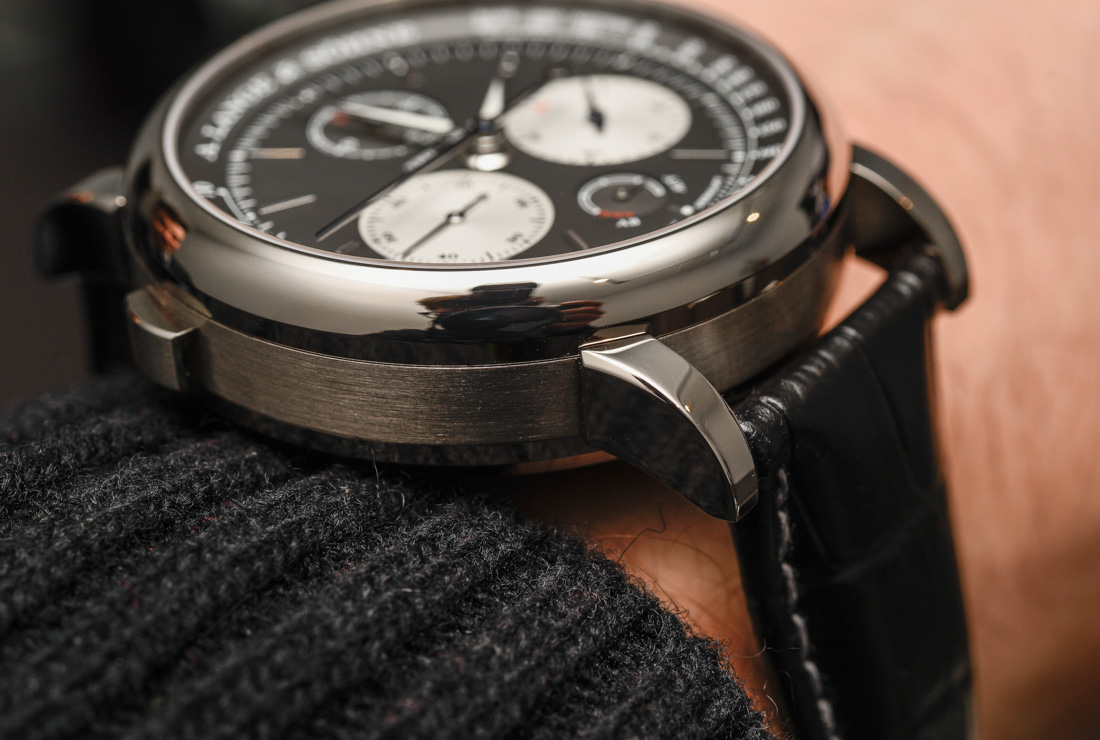

The Double Split and Triple Split watches both have very similar cases when it comes to size (the Triple Split is marginally thicker by 0.3mm). The 2018 Triple Split comes in an 18k white gold case that is 43.2mm wide and 15.6mm thick. Not a small watch and easily among the larger timepieces produced by A. Lange & Sohne these days. It is an incredible timepiece for aficionados like me because it represents something new, something not done before, and something genuinely fulfilling. For this reason A. Lange & Sohne deserves the status it has among collectors. It’s something I don’t expect to change anytime soon. A. Lange & Sohne will produce 100 pieces of the Triple Split watch in 18k white gold. Price is $147,000 USD. alange-soehne.com

